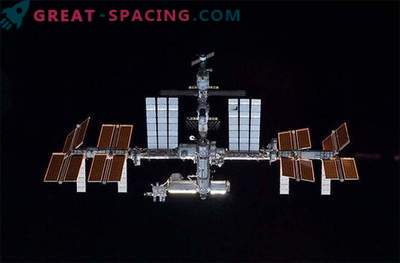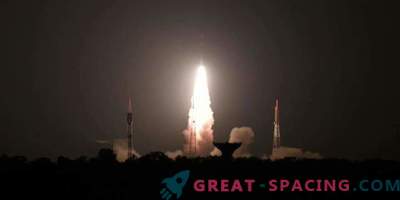
Orbital maneuvers of a mysterious object launched by Russia raise fears that the satellite could be some kind of space weapon.
At the center of discussion is the "Object 2014-28E", which Russia launched in May along with three military communications satellites. Russian officials cannot explain the nature of this object, saying that it could well be space junk. But satellite tracking devices have spotted a number of interesting maneuvers over the past few weeks, the Financial Times reported on Monday.
For example, last weekend 2014-28E, apparently, met with the remnants of the rocket stage, which helped the object to reach orbit.
As a result, some space analysts expressed concern that the 2014-28E facility could be part of an anti-satellite program. Perhaps a revived version of the Cold War project called the “satellite killer”, which, according to a statement by Russian officials, was dismissed when the Soviet Union collapsed in the early 1990s.
Military officials have long considered the possibility of destroying or disabling the satellites of another country as a key aspect of national security. The Soviet Union is not the only country that developed such technologies. China destroyed one of its meteorological satellites in 2007, which gave rise to a huge cloud of space debris. The United States also blew up one of its secret spacecraft in 2008. “Concerns about the 2014-28E facility are completely legitimate,” said Joan Johnson-Freese, a professor of national security at the US Naval College in Newport, Rhode Island. But she warned against hasty conclusions, saying that Russia can pursue several goals by launching 2014-28E.
"Any satellite with the ability to maneuver has the potential to become a weapon," added Joan. "But does this mean that all satellites capable of maneuvering can be weapons? No."
The United States is also working to create a technology for maneuvering satellites, she noted, citing the Experimental Eputnikov System-11 (XSS-11) and NASA DART spacecraft, both of which were launched in 2005. The next step was the development of a mission called Orbital Express, which was launched in 2007 to test satellite tracking technology.
“When we developed DART and XSS-11, other countries began to panic. You know, the US has space weapons, they said,” continues Johnson-Freese. “The first thing we did was to calm them down. No, no. This is not what you think. This is just a maneuvering satellite. But in any case, where there are technologies of double value, there will be problems.” “Almost all space technologies have a double meaning,” said Brian Wieden, technical consultant for the Secure World Founda (a non-profit organization dedicated to space stability) and a former orbital analyst for the Air Force. For example, a spacecraft used for orbital convergence operations can help a nation check, maintain and refuel its satellites or de-orbit a failed vehicle.
Visible considers it unlikely that the object 2014-28E is so harmless.
"The secrecy surrounding the spacecraft develops rumors about the mission, as well as the fact that American-Russian relations have deteriorated as a result of Russia's intervention in Ukraine at the beginning of this year," Widen added.
"I think that if this happened in a different context, there would be less rumors and assumptions," Widen continues. "But since this happens in a context of heightened tension, we assume the worst."











































